Hunger and excess: Beyond pretty food art
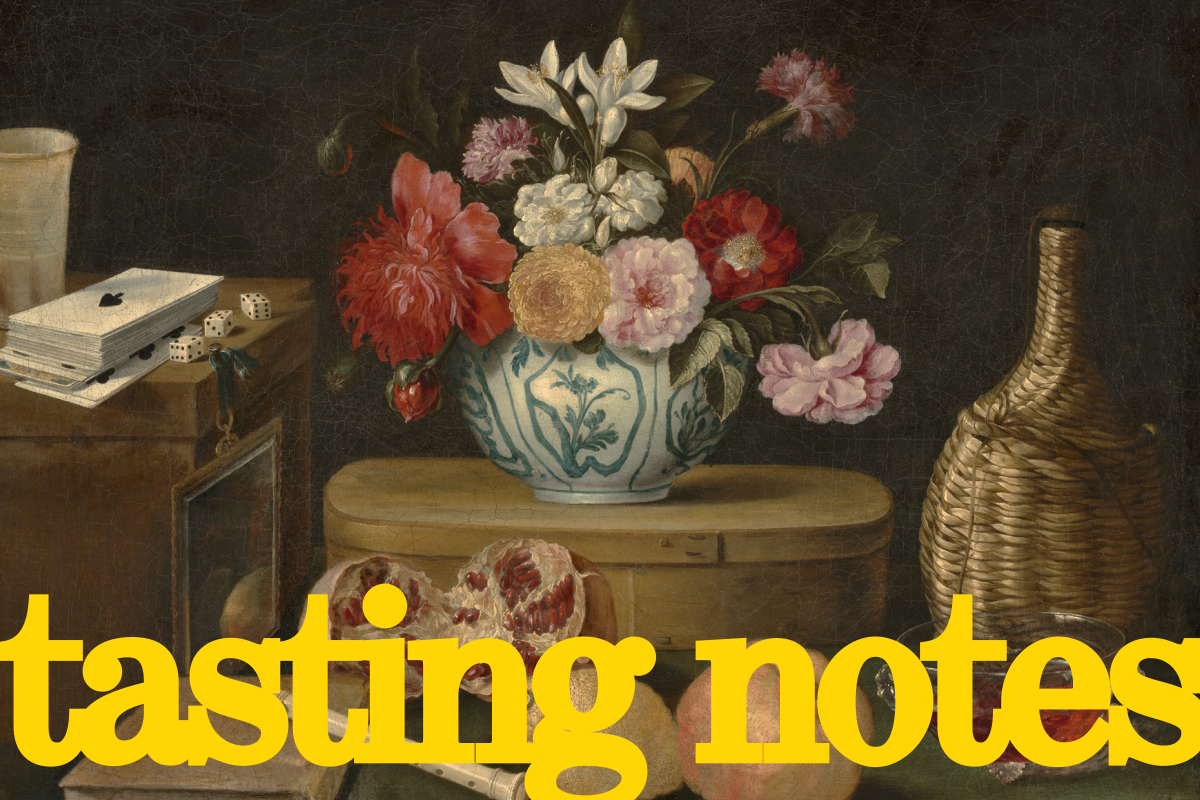
- Share via
The return of the L.A. lunch? Plus a mole stand’s closure, Porridge + Puffs 2.0 and the death of young pastry chef. I’m Laurie Ochoa, general manager of L.A. Times Food, with this week’s Tasting Notes.
The food of art

It occurred to me as I was looking at a pair of Jean-Baptiste Simeon Chardin paintings of two kitchen scenes, both with butchered meat on a hook and one with the image of a dead bird, its body askew, that we have become disconnected from the origins of our food. That’s not a new revelation, but it’s not bad to be reminded of this fact from time to time. It’s just one of the messages that comes through at the Norton Simon Museum‘s new exhibition “All Consuming: Art and the Essence of Food.”
Even the fruits and vegetables depicted in some of the show’s other still-life paintings have a frankness that comes through the romanticism of the painter’s eye. Look at the gnarled shapes of the carrots and dirt clotted onto the massive root of what appears to be a cardoon even as pretty butterflies flit around the display of overabundance in Frans Snyders’ “Still Life with Fruit and Vegetables.”
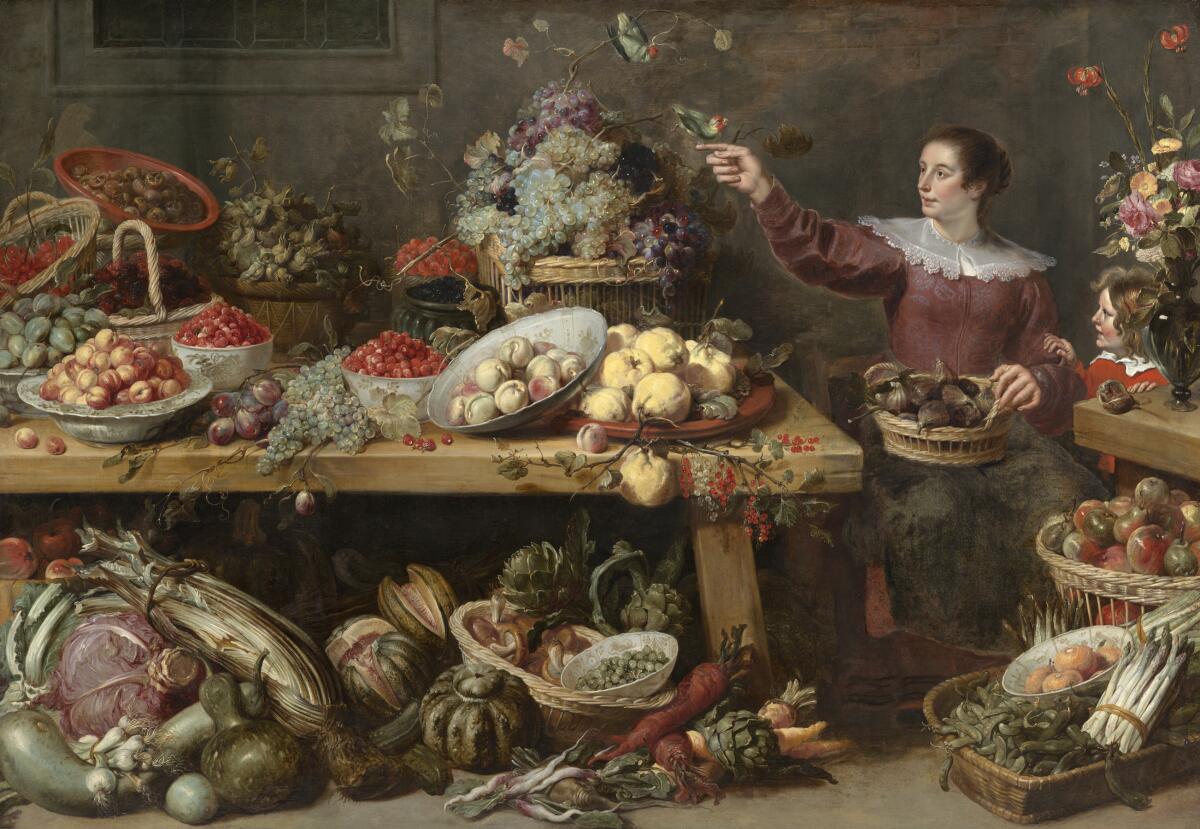
The show’s curator, Maggie Bell, contrasts images of excess in food and drink with those of poverty and hunger. Alessandro Magnasco‘s stunning “Friars Around a Hearth” is not an image you’d normally expect in a show devoted to food, but as the exhibition notes say, “Depending on the viewer’s perspective, this painting could praise the friars’ extreme self denial, offer a playful view of their daily life or question the necessity of choosing poverty as a devotional practice.”
The hunger and excess juxtaposition from past centuries is, of course, just as relevant today in a city where people living on the streets are sometimes a few yards away from restaurants serving tasting menus costing hundreds of dollars.
Enjoying this newsletter? Consider subscribing to the Los Angeles Times
Your support helps us deliver the news that matters most. Become a subscriber.
Jan Steen‘s “Wine is a Mocker,” depicting a drunken woman in the middle of a crowd laughing at her inebriated state, takes center stage in the exhibition’s section on excess. “Her fine clothes are disheveled, suggesting that her overindulgence has jeopardized her virtue,” Bell said in remarks at the show’s preview earlier this week. Artists, she said, often were addressing “moral and gender concerns” in these works. “Beginning with Eve tempting Adam with the forbidden fruit ... depictions of women’s appetites went hand in hand with anxiety around female sexuality.”
Bell also contrasts the photography of Edward Weston with that of Manuel Álvarez Bravo — say, a frankly sexual shot of a pepper by Weston with Álvarez Bravo’s group of men seen in shadow at a bar, framed by the word “Comedor.”
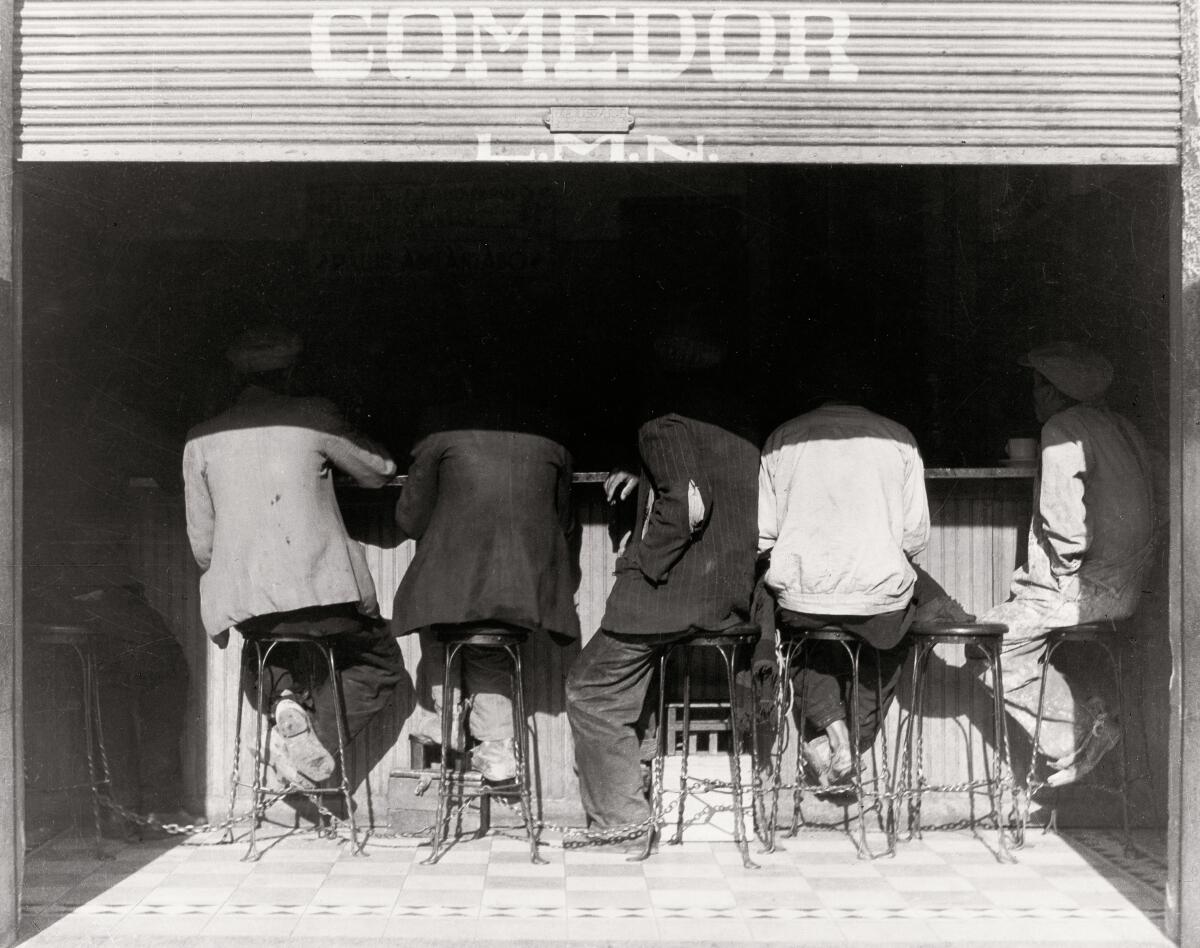
)
In his essay “Eating With the Eyes” for the Italian exhibition “Foto/Industria 2021: Food,” staged in Bologna, Francesco Zandt wrote of the way “art and gastronomy merged,” looking at the Futurists, an “artistic movement [that recognized] food as having additional value beyond simple issues of taste and nutrition.” As the “Manifesto of Futurist Cooking” states, “You think, you dream and you act, according to what you drink and eat.”
We’ve certainly seen the merger in our restaurants as chefs going back to Marie-Antoine Careme in 19th century France began to present food not merely as sustenance but art.
Eat your way across L.A.
Get our weekly Tasting Notes newsletter for reviews, news and more.
You may occasionally receive promotional content from the Los Angeles Times.
Where does that put us now, in this moment when we document every meal for our personal social media feeds? Though some aim for “realism” in their Instagram images, many strive to make food look as beautiful as a still-life painting.
But as “All Consuming” reminds its visitors, a still life, no matter how beautiful, is not always just a pretty picture. We may be revealing more in our filtered images than we realize.
You’ll never eat lunch in this town ... oh, wait ...
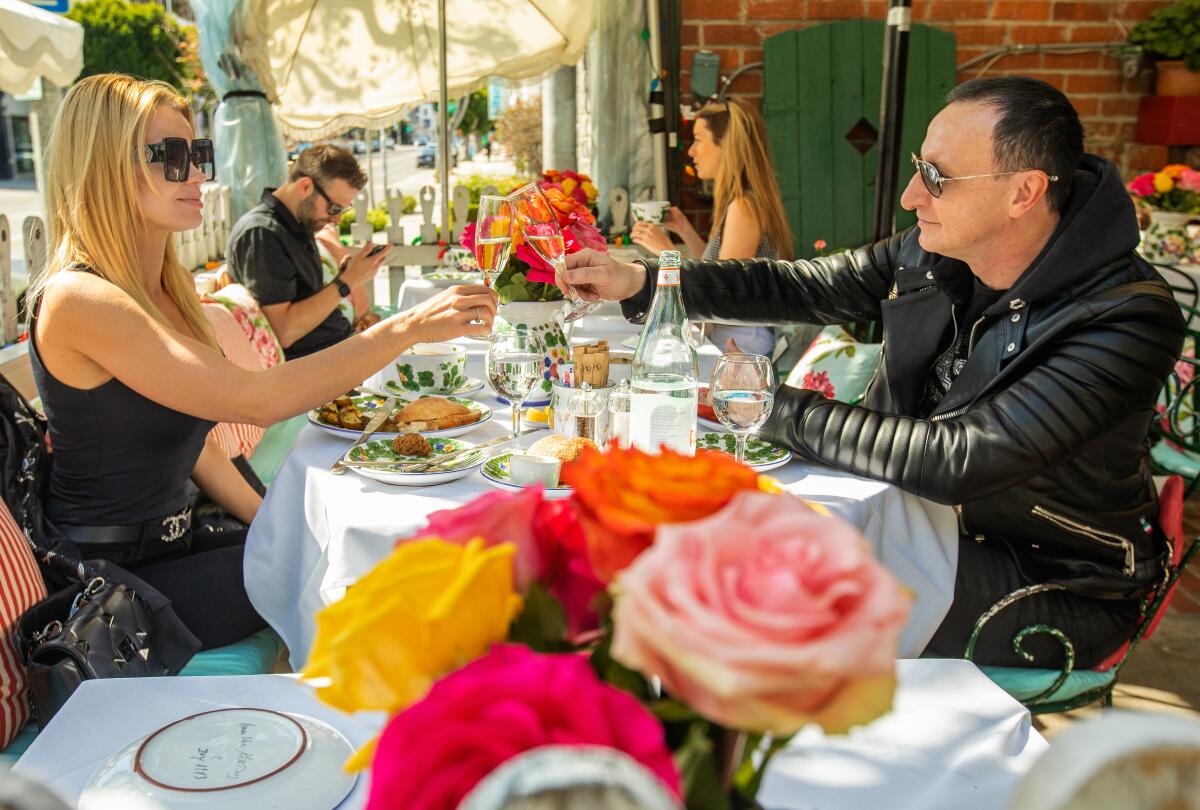
It’s gotten harder and harder to find a place to meet for lunch in Los Angeles, leading many to wonder if the Hollywood power lunch is on its last legs. But Danielle Dorsey, Jenn Harris, Lucas Kwan Peterson and Betty Hallock make the case that we’re starting to see a shift back to lunch. It may be too early to call it a comeback, but they put together a guide to 14 great lunch spots in the city, from Alta Adams and Destroyer to food hall Citizen Public Market and food editor Daniel Hernandez‘s favorite power lunch spot, the “parking lot-turned-patio” Johnny’s West Adams where the call is pastrami with crinkle fries.
Of course, if you’re going for an iconic L.A. lunch, you’d have to consider the Ivy. Kwan Peterson ate several meals at the prime people-watching spot for his review of the celebrity-attracting, flower-festooned “grande dame of scene-y dining.” He was not disappointed, at least with the scene. The restaurant, he says, “remains a rite of passage for a certain set of Angelenos, and an essential part of the evolution of dining in the city.”
The food was more hit and miss, though he says if you stick with the restaurant’s classics — spicy corn chowder, crab cakes and a smoked salmon pizza that rivals Wolfgang Puck‘s — you’ll be happy.
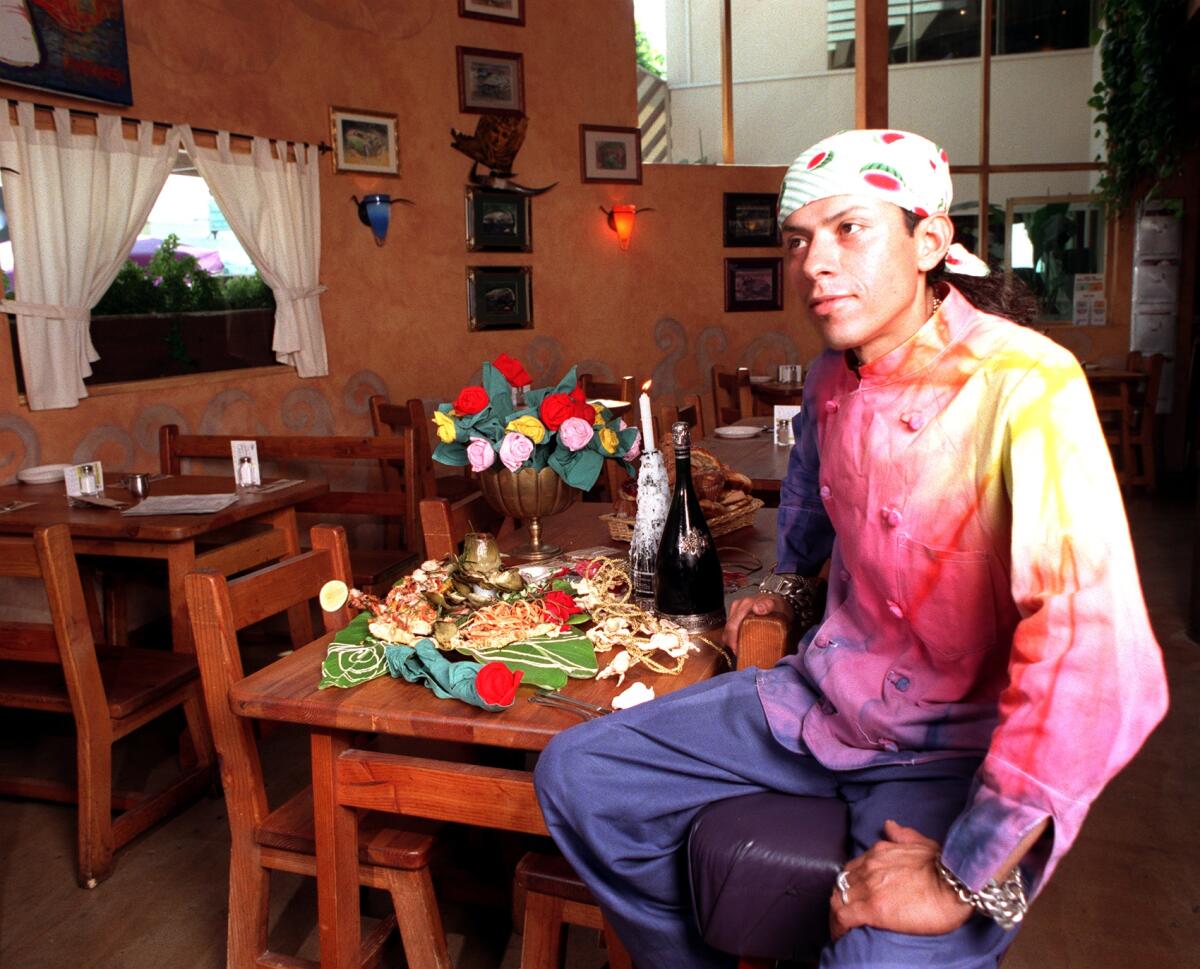
Kwan Peterson’s review brought back memories of a chef who made his name at the Ivy and went on to help pioneer the Virgil corridor as a dining destination long before the lines appeared at Sqirl and Courage Bagels. Two upstart Latinos, the late chef Toribio Prado and late restaurateur/impressario Mario Tamayo — a “consummate cultivator” as the late Nikki Finke described him — opened Cha Cha Cha in a converted house on Virgil and what was then called “the wrong end of Melrose.” The glitterati came in droves, attracted by Tamayo’s young, hyper-fashionable circle of artists, designers and underground clubgoers plus Prado’s Caribbean-inspired food, including his take on the corn chowder he used to make at the Ivy.
Mole exit
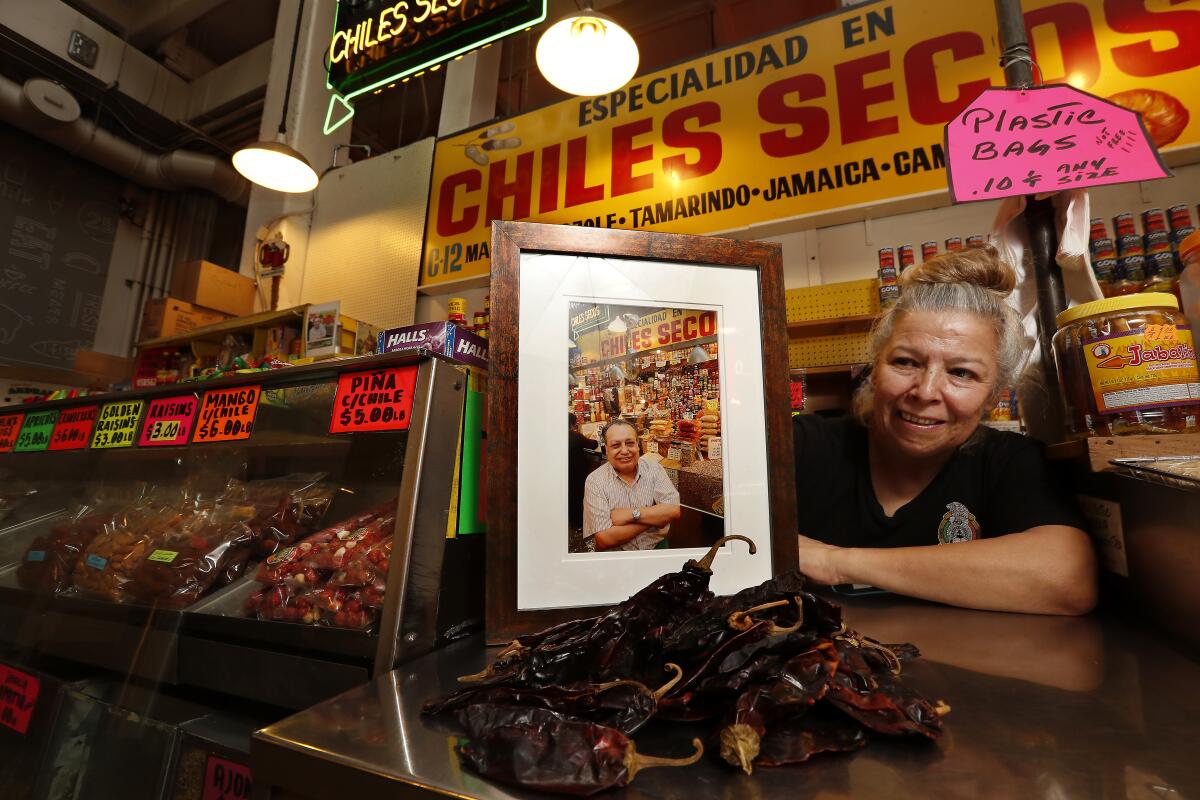
Chiles Secos, marked by its red-and-yellow sign in the middle of downtown L.A.’s Grand Central Market, has been a familiar and comforting presence with its painterly display of dried chiles arranged in bins by color and type, cellophane bags of dried fruits, rows of colorful chewing gum and round cakes of the peanut candy De la Rosa Marzapán, plus, of course, its beloved earth-toned mole pastes imported from Mexico. But this month, after some 50 years in business in various guises (the moles weren’t added until the 1990s), Chiles Secos left the market. Stephanie Breijo talked with Claudia Armendariz, granddaughter of founder Celestino Lopez and niece to his daughter Rocio Lopez, who took over after her father’s death. Armendariz told Breijo that despite Lopez’s struggles when the market started bringing in new vendors and restaurants several years back, as Steve Lopez documented in a 2018 column, it was her aunt’s desire to spend time with her family more than gentrification issues that led to the closure.
“She was ready to retire and nobody could or wanted to keep it going,” Armendariz said. “It was just time; having to run the business and be there every day takes a toll.”
Still, she told Breijo, “Walking around the market now, it’s just not the same place. I just kind of felt like I would rather bow out gracefully and accept that maybe we don’t belong there anymore. But we still belong in the world.” Armendariz hopes to bring back Chiles Secos in another form, perhaps through digital sales, sometime in the future.
Have a question?
More from L.A. Times Food
— Japan was one of the last countries to reopen to tourism after COVID and now Jenn Harris says she keeps hearing about friends and colleagues heading there for vacation. With no plans to travel there soon, she’s soothing her FOMO by focusing her recent eating on meals at some of L..A.’s excellent Japanese restaurants, including ramen at Japonica, onigiri at Rice & Nori and tongue two ways and saba kobujime at Kinjiro, the izakaya I wrote about in last week’s newsletter.
— In this week’s Quick Bites column, Stephanie Breijo writes about the long-awaited return of Minh Phan’s Porridge + Puffs. Phan recruited Eleanor Hurtt, former sous chef of Cassia, to head the kitchen at the spot where, as Breijo writes, “everything costs less than $20.” Plus, notes on the just-opened Mexican spot Bombo in West Hollywood, a new La Morra pizza location in the Valley, a Tacos 1986 in Santa Monica and word that Dear John, the steakhouse project from Hans and Patti Rockenwagner and Josiah Citrin, might be losing its lease.
— Don’t forget to save next weekend for the L.A. Times Festival of Books, April 22 and 23 at USC. For our L.A. Times Food collaboration with L.A.’s Now Serving, cookbook authors Noah Galuten, Iliza Shlesinger, Homa Dashtaki, Ixta Belfrage, Ellen Bennett and Keith Corbin will be signing books at our booth. You can also meet our food writers and editors and check out our new L.A. Times Food Collection of tea towels, stickers, hats, T-shirts and sweatshirts. If you plan to be in New York on May 9, stop by our Coast to Coast bicoastal food and drink party at the Lighthouse at Chelsea Piers sponsored by City National Bank. Chefs from L.A.’s Anajak Thai, Angry Egret Dinette, Damian, Heritage Barbecue, Mini Kabob and Pizzeria Mozza will be there. From New York: Cosme, Koloman, Lady Wong, Lafayette, Mari, Mokbar, Rezdora NYC, Rule of Thirds, Singapura and Win Son.
Finally ...

Many in the food community are remembering 25-year-old Damian pastry chef Joshua Ulmer, who died late last month. Stephanie Breijo talked with his colleagues at L.A.’s Damian and family members about Ulmer. At work, Damian assistant general manager Alex Kim-Salas said, Ulmer “was an absolute titan — striving for, and often achieving, perfection with style and grace, But outside of work Josh was simple, funny, easygoing and down to do anything.”
Remarking on his impact, Ulmer’s family in a statement told Breijo, “A guest left him a note one night during service that said, ‘I heard Nipsey [Hussle] said that the greatest human act is to inspire. The desserts were inspirational.’”
Sign up for the Tasting Notes newsletter
Eat your way across L.A.
Get our weekly Tasting Notes newsletter for reviews, news and more.
You may occasionally receive promotional content from the Los Angeles Times.





